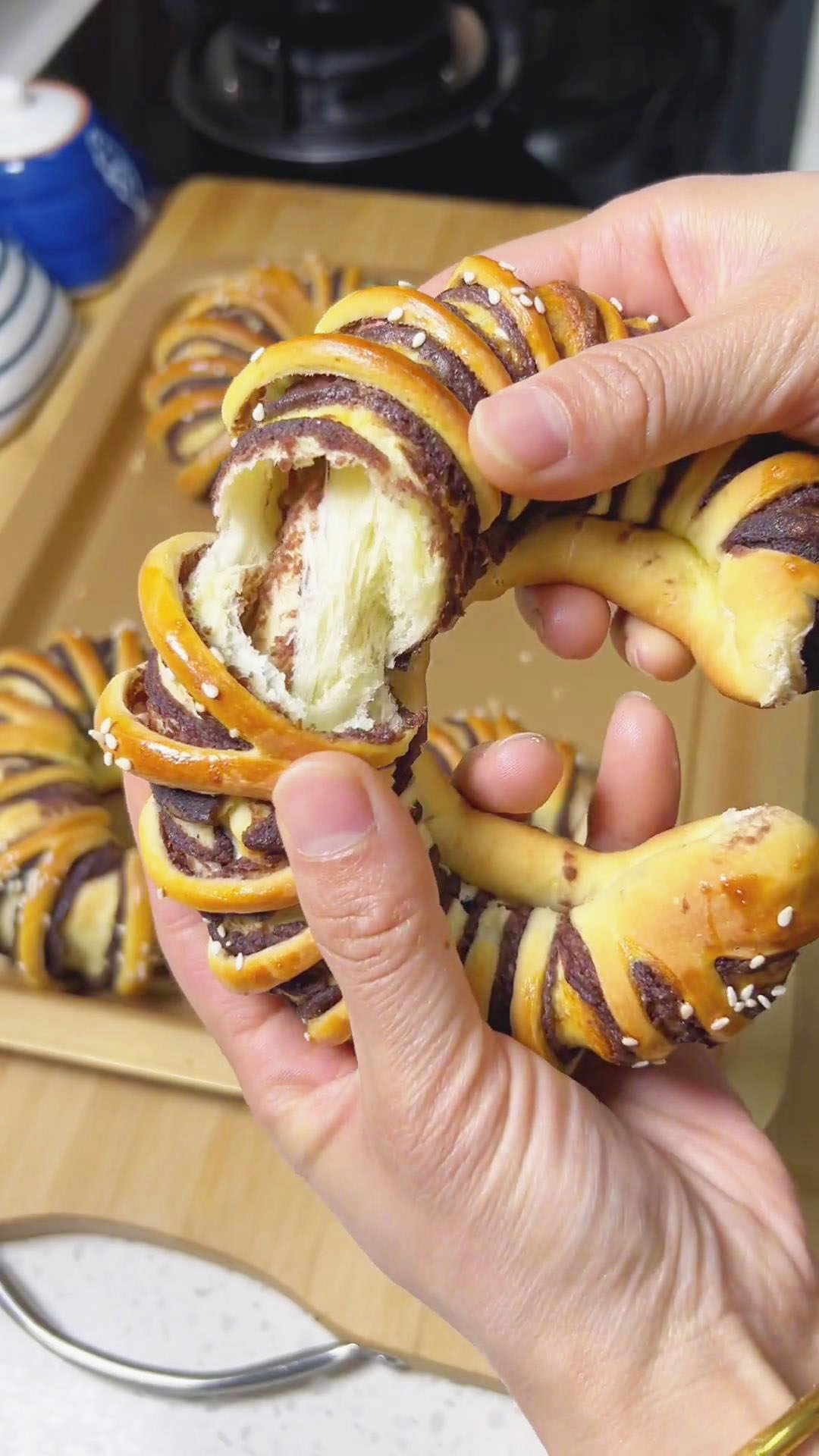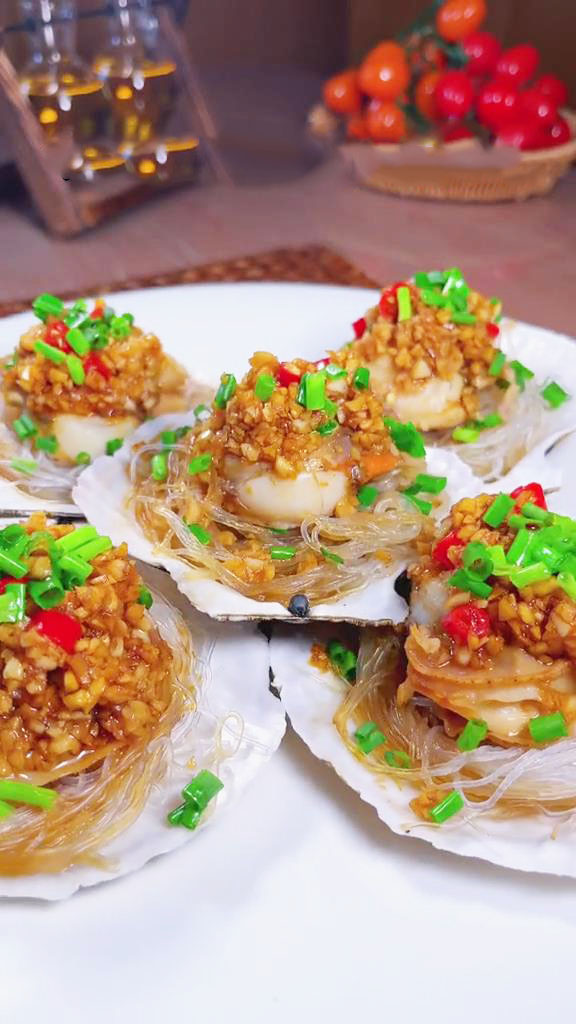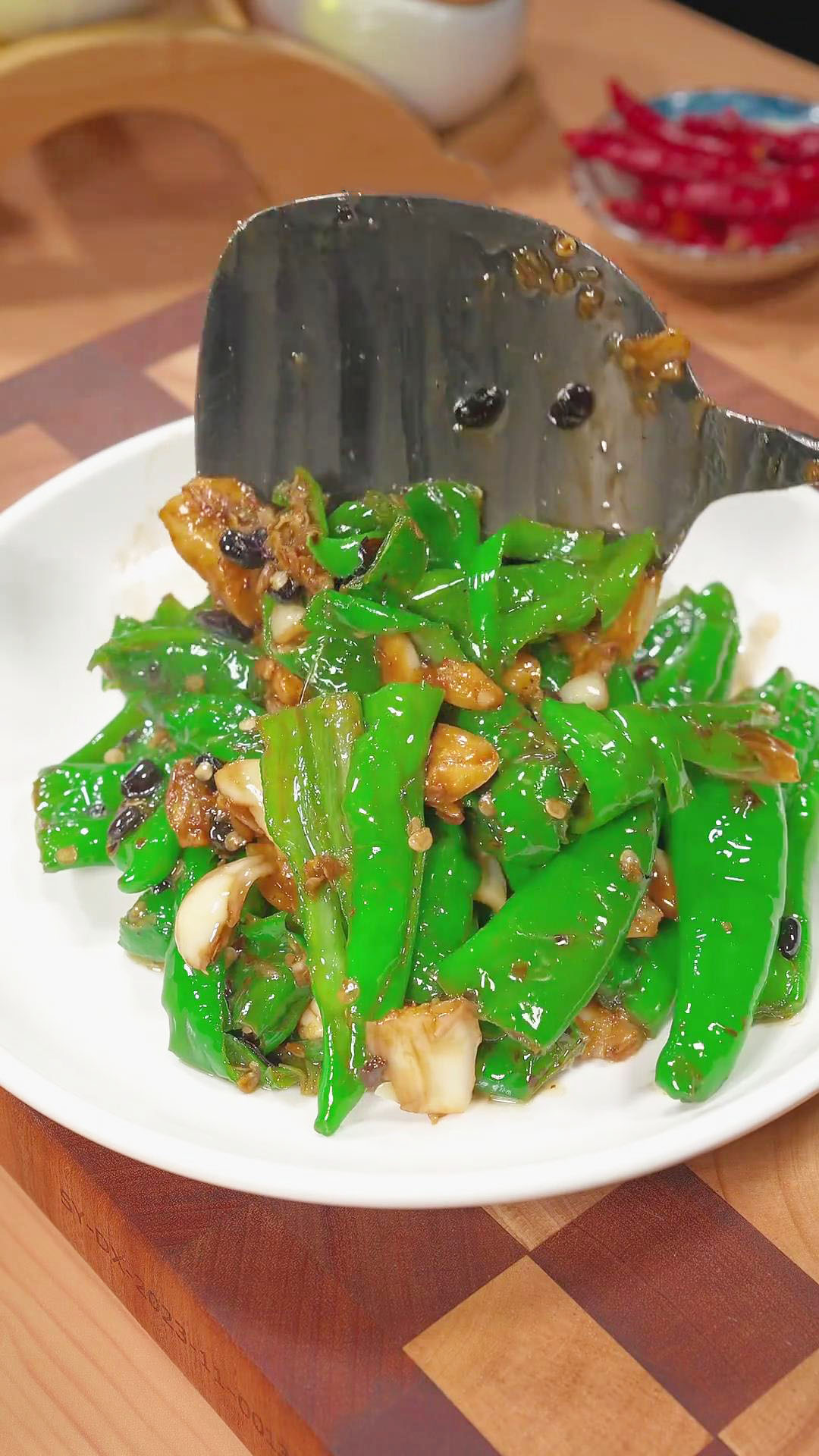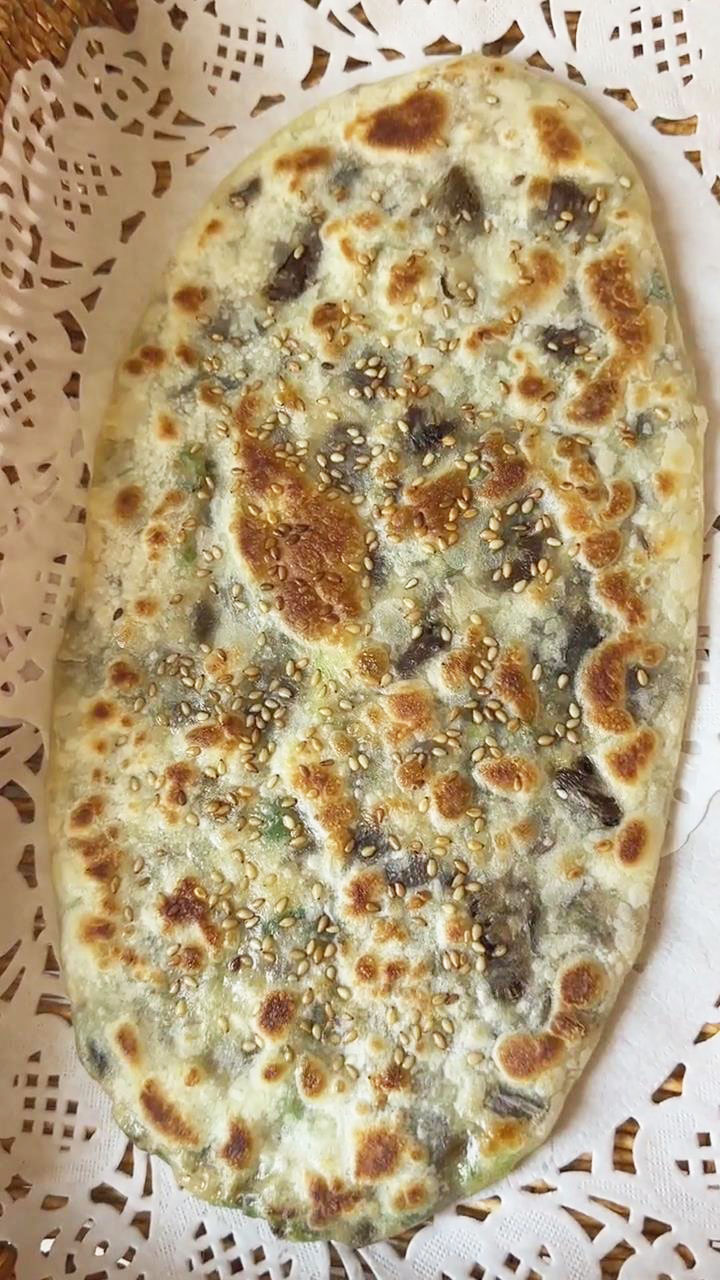This post may contain affiliate links. Please read our disclosure policy.
Indulge in a pillowy soft bread that is sweet and earthy. You might think this red bean recipe is a complicated one with its intricate swirl design, but it is actually quite easy to recreate. As long as you stick to my easy-to-follow steps, you will feel like a pro in baking the first time around!
What Is Red Bean Bread?
This bread recipe is just like any other baked goods but with the flavors of red bean paste. If you love a good swirl just like my Purple Sweet Potato Bun recipe, you can recreate the same swirls using a different shaping method.
In this recipe, I make the dough with high-gluten flour, egg, white granulated sugar, yeast, whole milk, and butter.
Like any other baked bread and buns, the dough requires kneading and resting to let it rise and make it easier to shape.
Then, I incorporate the red bean paste by wrapping it with a piece of dough. The rest of the recipe steps simply call for shaping and baking.
It is the perfect bun the whole family can enjoy. Have it for breakfast with coffee or tea or as an afternoon snack. If you love red bean recipes, you should definitely make these as well:
Where To Get Red Bean Paste?
The bread takes its overall flavor from the red bean paste. This paste is popularly used in various Asian sweet treats like mooncakes, pancakes, and glutinous rice balls (Tang Yuan).
People love red beans for their many health benefits, such as removing coldness from the body, increasing blood circulation, eliminating toxins, and reducing swelling, among other things.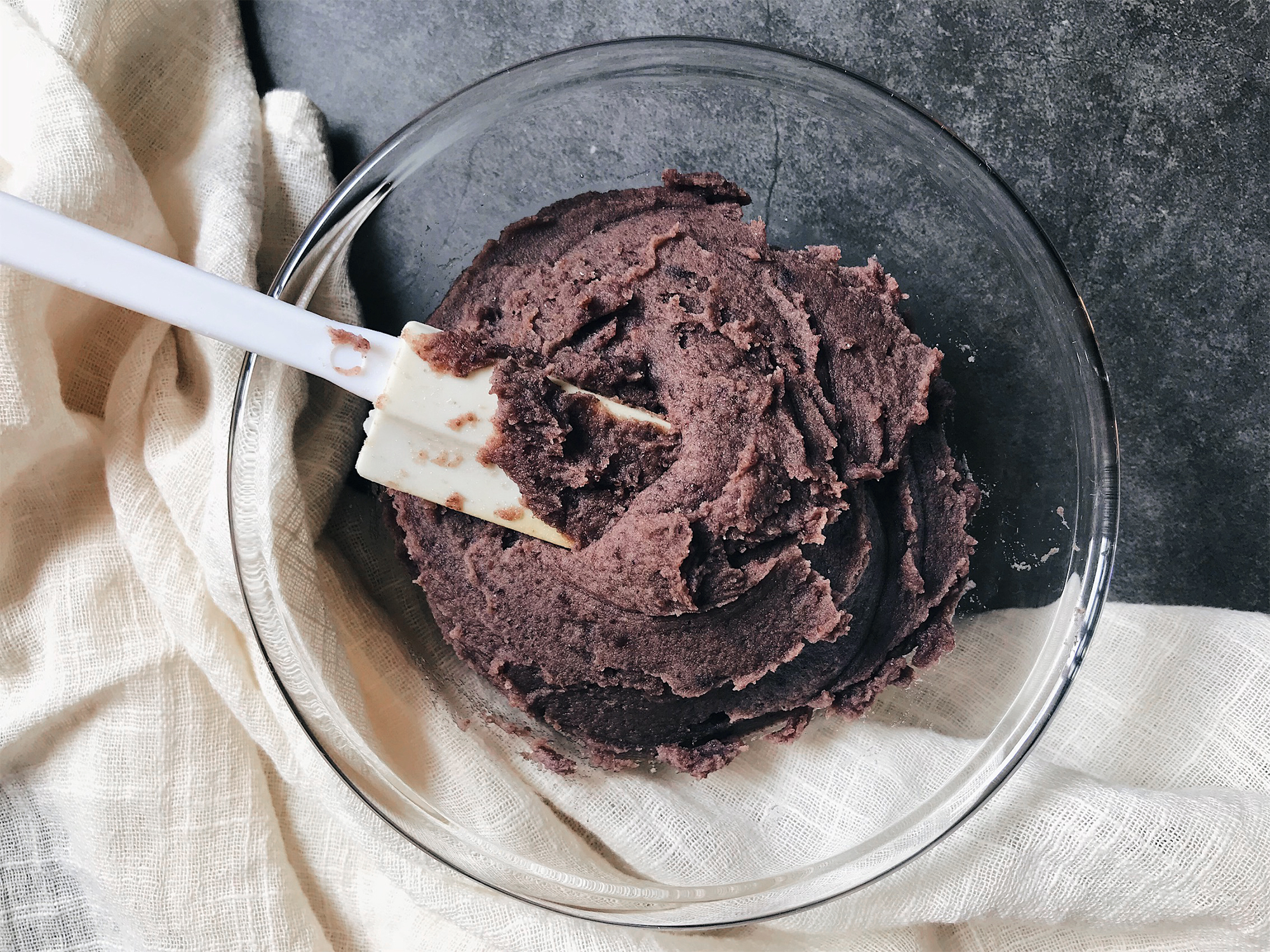
It is made from red beans or adzuki beans. Generally, the paste is a form of blended beans without additional seasonings. However, you may find other variations incorporating sugar and oil for a hint of sweetness and added moisture.
You can find this in Asian or Chinese stores labeled as adzuki bean paste, red bean jam, or hong dou sha (红豆沙).
If you prefer homemade without preservatives, follow my Red Bean Paste recipe. My red bean paste recipe requires soaking, boiling, blending, and cooking the beans with sugar and oil.
A Baker’s Expert Tips And Suggestions
Are you a beginner in baking? Don’t worry about it! I used to be a total beginner myself and have learned the do’s and don’ts of baking along the way.
I want to help a fellow baker, so I prepared below my best tips for baking and some ingredient alternatives worth trying. Before proceeding with the recipe steps or gathering the ingredients, quickly read this section.
Ingredient Alternatives
- High-gluten flour: High-gluten flour makes the bread chewy and firm, which is the ideal texture for this type of pastry. If you use low-gluten flour, it will make the bread soft and crumbly in texture. Flours with high gluten are vital wheat gluten flour, bread flour, or 00 flour. If you don’t have high-gluten flour, you can use all-purpose flour but the texture will be slightly different.
- Egg: The egg is used for structure and stability in the dough. The yolk is responsible for thickening the dough by adding fat, while the egg white helps lift the dough. If you need an egg replacer, you can use the following for 1 whole egg:
- 1 teaspoon baking soda + 1 tablespoon vinegar
- 1/4 cup applesauce
- 1/4 cup yogurt
- 1 tablespoon ground flaxseed + 3 tablespoons water
- Egg wash: You will also need another egg for egg wash. Before popping the bread in the oven, I suggest brushing it with egg wash. This is made with 1 beaten egg mixed with 1 tablespoon of liquid such as water, milk, or cream. Brushing the bread with egg wash gives it a shiny brown finish after baking.
- Yeast powder: Adding yeast to the dough will make the bread rise and airy. You can use instant or active dry yeast. In this recipe, I immediately mixed yeast with the rest of the dough ingredients without needing to dissolve in water first. Make sure to check if the type of yeast you use requires dissolving in water first or not.
- Sugar: This recipe can be sweetened with sugar if desired. However, sugar is still important in aiding in the fermentation process of the yeast. The fermentation process speeds up because yeast feeds on sugar and converts it into carbon dioxide and ethanol. These are the two elements responsible for making the bread rise. You can use white granulated sugar, brown sugar, coconut sugar, muscovado, or cane sugar.
- Whole milk: I use whole milk to have a fuller texture and richer taste. It also helps the bread have a light golden brown finish. You can use plain whole milk, coconut milk, or any plant-based whole milk. Whole milk can still be substituted with regular, low-fat, or skim milk.
- Milk or liquid temperature: Make sure to add this milk at room temperature and it should not be too hot. For your information, any liquid with a hot temperature between 120°F to 140°F will kill the yeast. If the yeast is killed, the bread will not rise because the fermentation process did not activate.
- Butter: Aside from milk, butter also helps in making the bread rich and creamy and having a crisp exterior. You can use regular butter, dairy-free butter, vegetable oil, margarine, mashed bananas, or coconut oil.
- Red bean paste: As mentioned, the best way to have red bean paste is to make your own from scratch. If you can’t make one or find it in the store, a closer alternative is white bean paste. You can also use other types of paste, such as Yam Paste, Lotus Seed Paste, and Purple Sweet Potato Paste just to have a variety of flavors.
- White sesame seeds: Add a simple decoration with white sesame seeds. It imparts a nutty flavor and a bit of crunch to the bread. You can substitute it with black sesame seeds with minimal difference in taste. However, omitting this from the recipe is fine if you don’t have it.
Baking Tips
- Resting the dough: In this recipe, I let the dough rest two times. Let it rest after the first kneading and another rest after shaping it with the red bean paste. Resting the dough is crucial in holding its shape since the gluten begins to relax and hydrate. This makes it easier to hold and shape the dough according to your desired style.
- Proofing the dough: As part of the resting steps, it allows the dough to proof and double in size. This is the part where it allows the yeast to start the fermentation process. Once the yeast activates, the dough should eventually rise and increase in size, which should happen after the second resting time.
- How long should I let it proof?: Proofing should last until it doubles in size.This can last for an hour more. Do not proof for too long or too short. Over-proofing will cause the dough to crumble because of too much air, whereas under-proofing will not complete the fermentation process of the yeast and lead to a flatbread.
- What is the ideal environment for proofing?: Not only the amount of time affects the dough, but the warm or cold environments as well. The warmer the environment, the faster the proofing process. So make sure to keep watch on the dough to avoid over-proofing it. On the other hand, the colder it is, the slower the proofing process. To speed up the proofing process on cold days, you can create a warm environment for the dough by putting it in the oven with a cup of boiled water next to it.
- What are the signs of a properly proofed dough?: So, how will you know if the dough is finished with the proofing process? Check these three indicators:
- Size: It should be at least or 2 times bigger.
- Aroma: It should not smell funny but emit a natural wheat scent.
- Texture: It should be smooth and elastic.
Ingredients And Kitchenware You Need
Below are the basic kitchen tools you need to help make the steps faster and easier. Basically, you will mostly need your hands and a lot of muscle effort in kneading and shaping the dough. Here’s a list of kitchenware and ingredients to prepare.
Kitchenware
- Mixing bowl
- Kitchen weighing scale (optional, but recommended for accurate measurements)
- Plastic wrap
- Dough cutter or knife
- Rolling pin
- Knife
- Baking tray
- Baking brush
- Oven
Ingredients
- 300g of high-gluten flour
- 1 whole egg
- 15g of white granulated sugar
- 3g of yeast
- 175g of whole milk
- 20g of butter
- Red bean paste
- Egg wash (1 beaten egg mixed with 1 tablespoon of liquid such as water, milk, or cream)
- White sesame seeds
Detailed Instructions To Make Red Bean Bread
In a nutshell, you will knead the dough, let it rest, and shape it with the red bean paste before baking. You can shape it in any form you want, but you can follow how I make it into a rolled doughnut shape with streaks. Learn more about the steps with my 30-second recipe tutorial video on Instagram or TikTok. Finished creating this recipe? Tag @kitchenmisadventures and share your beautiful creations with us!
- In a bowl, combine high-gluten flour with beaten egg, white sugar, and yeast.

- Gradually pour the whole milk into the mixture and knead it repeatedly until the dough becomes smooth. Generally, the dough should become smooth and not sticky. It should not stick to the bowl or your hands.
- Incorporate the butter into the dough and continue to knead and stretch until a thin film forms. It should be semi-transparent when stretched into a thin sheet.

- Form a ball of dough and cover it with plastic wrap to let it rest for 20 minutes.

- After resting, divide the dough into 6 equal parts using a dough cutter or knife.

- Take each portion and form a thick circular dough wrapper.
- Place the red bean paste in the center and wrap the dough to seal, following the method in my Red Bean Paste Buns recipe.

- Flatten the assembled dough using a rolling pin to form a flat oval sheet.

- Use a knife to slice vertical cuts halfway through. Do not slice the dough all the way through and it should be up to the red bean paste part only.

- Turn the sliced dough to the other side and roll it into a long cylindrical dough. The streaks should be facing outward.
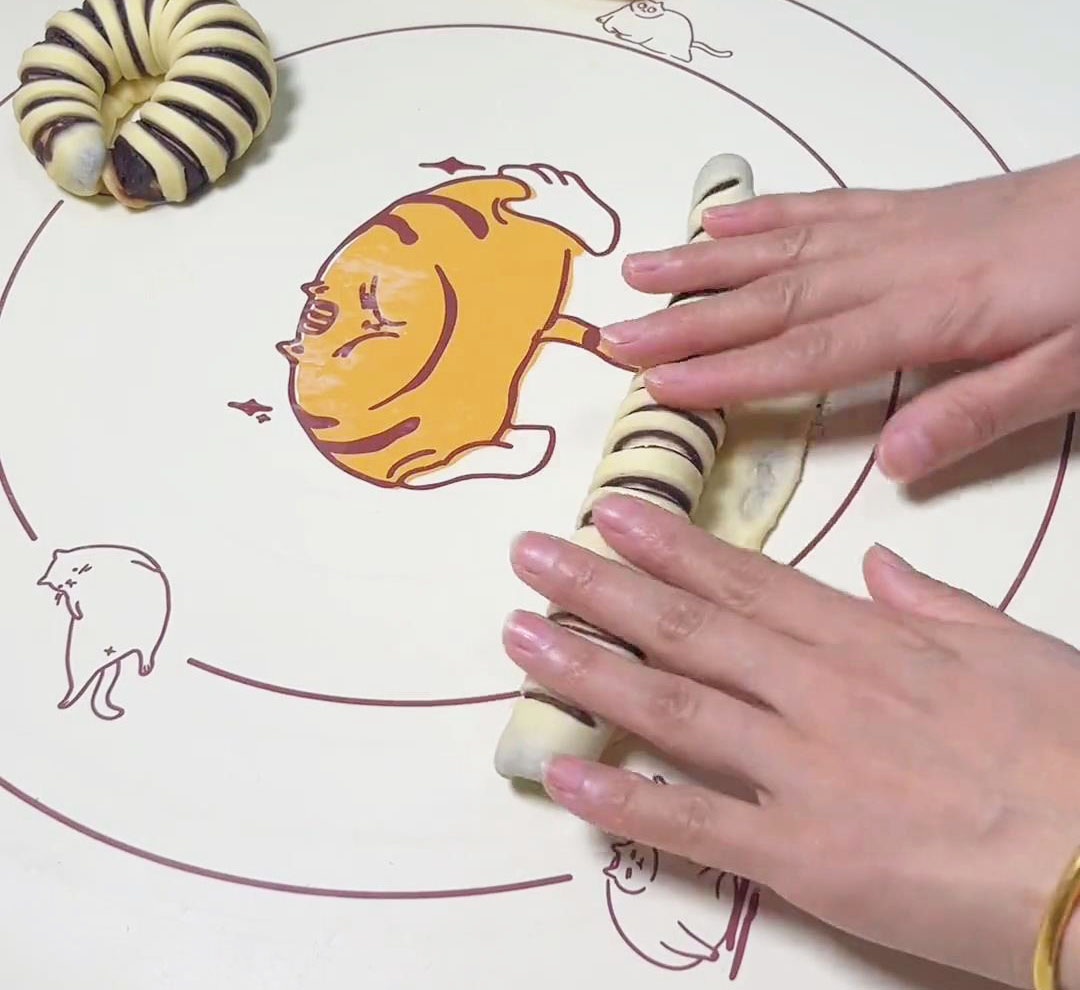
- Then, connect both ends of the dough to form a doughnut-shaped dough.
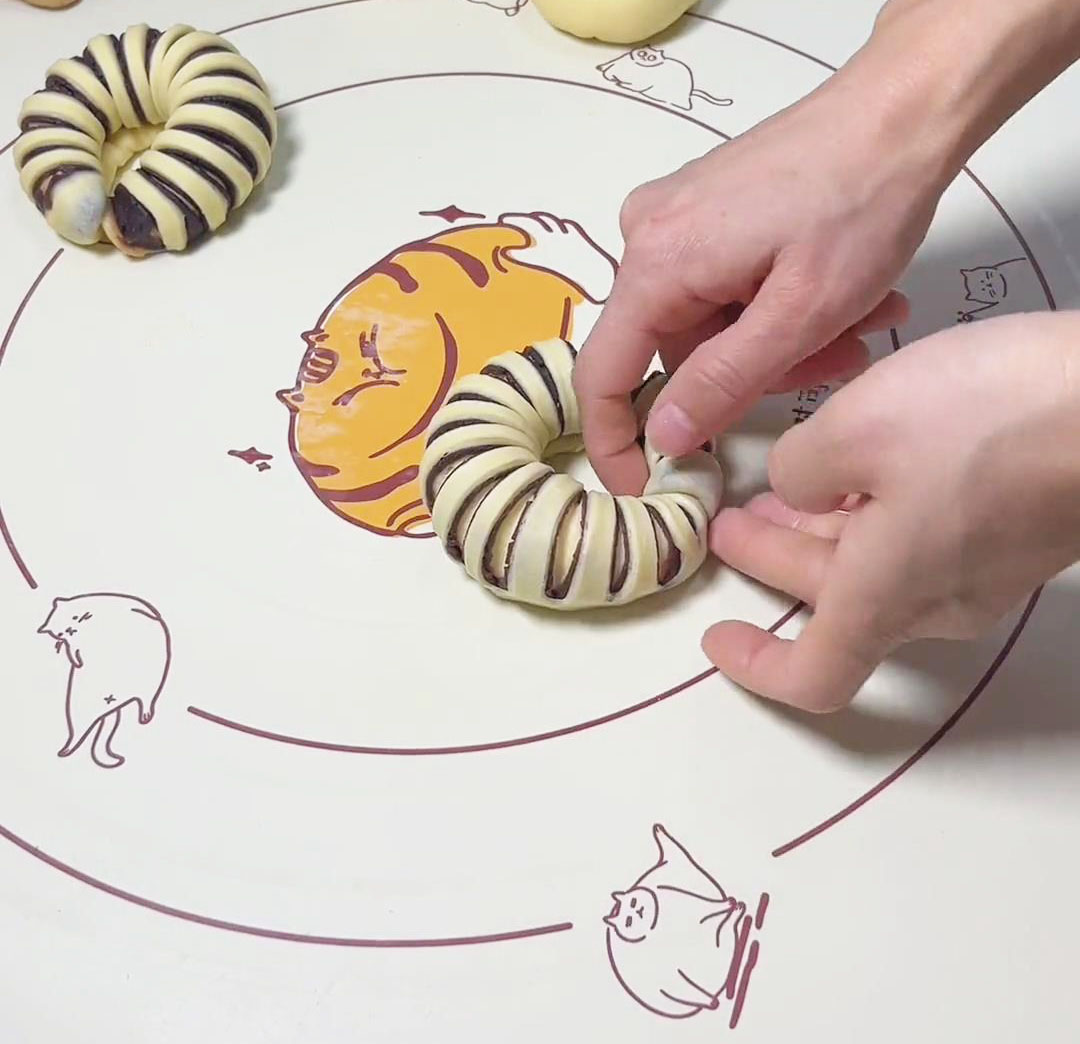
- Place the bread rolls on a baking sheet and let them rise until they double in size. Make sure they are covered again with plastic wrap.

- While waiting for it to rise, make the egg wash by mixing 1 beaten egg with 1 tablespoon of liquid such as water, milk, or cream.
- After letting the dough rest, brush the exterior with egg wash.

- Sprinkle white sesame seeds on top of the bread rolls.
- Preheat the oven to 180°C or 356°F.
- After preheating, bake the red bean bread for about 25 minutes or until golden brown. Enjoy this bread while hot and fresh!

If you love pastries, try these recipes as well: The Easiest Homemade Pineapple Cake, Hong Kong Style Pineapple Buns (Bolo Bao), and Chinese Sachima Soft Flour Pastry Cake (沙琪瑪).

Oven-Baked Red Bean Bread Recipe From Scratch
Equipment
- Kitchen weighing scale (optional but recommended for accurate measurements)
- Dough cutter or knife
- Knife
- Baking tray
- Baking brush
- Oven
Ingredients
- 300 g high-gluten flour
- 1 whole egg
- 15 g white granulated sugar
- 3 g yeast
- 175 g whole milk
- 20 g butter
- Red bean paste
- Egg wash 1 beaten egg mixed with 1 tablespoon of liquid such as water, milk, or cream
- White sesame seeds
Instructions
- In a bowl, combine high-gluten flour with beaten egg, white sugar, and yeast.
- Gradually pour the whole milk into the mixture and knead it repeatedly until the dough becomes smooth. Generally, the dough should become smooth and not sticky. It should not stick to the bowl or your hands.
- Incorporate the butter into the dough and continue to knead and stretch until a thin film forms. It should be semi-transparent when stretched into a thin sheet.
- Form a ball of dough and cover it with plastic wrap to let it rest for 20 minutes.
- After resting, divide the dough into 6 equal parts using a dough cutter or knife.
- Take each portion and form a thick circular dough wrapper.
- Place the red bean paste in the center and wrap the dough to seal.
- Flatten the assembled dough using a rolling pin to form a flat oval sheet.
- Use a knife to slice vertical cuts halfway through. Do not slice the dough all the way through and it should be up to the red bean paste part only.
- Turn the sliced dough to the other side and roll it into a long cylindrical dough. The streaks should be facing outward.
- Then, connect both ends of the dough to form a doughnut-shaped dough.
- Place the bread rolls on a baking sheet and let them rise until they double in size. Make sure they are covered again with plastic wrap.
- While waiting for it to rise, make the egg wash by mixing 1 beaten egg with 1 tablespoon of liquid such as water, milk, or cream.
- After letting the dough rest, brush the exterior with egg wash.
- Sprinkle white sesame seeds on top of the bread rolls.
- Preheat the oven to 180°C or 356°F.
- After preheating, bake the red bean bread for about 25 minutes or until golden brown. Enjoy this bread while hot and fresh!
Video
Nutrition

